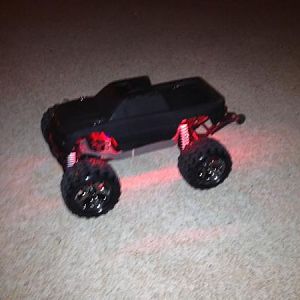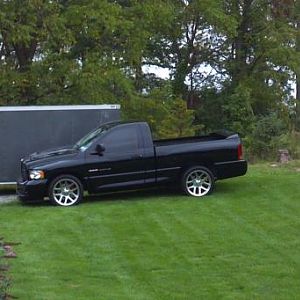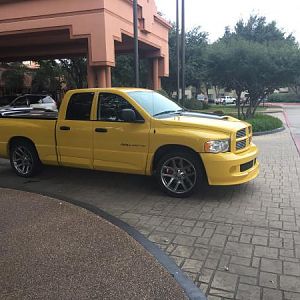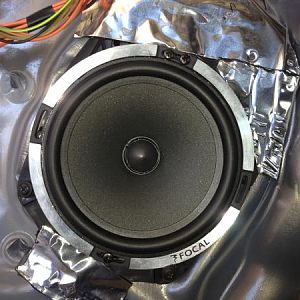I already did I am just waiting now:marchmellow: I am used to doin shit the hard way I woudnt now how to act if I had a lift or engine hoist:marchmellow: hurryStinker said:I have tried it, it is tones easier to jsut remove the engine
try those directions they are tons of fun
You are using an out of date browser. It may not display this or other websites correctly.
You should upgrade or use an alternative browser.
You should upgrade or use an alternative browser.
motor upgrades
- Thread starter Ironhead
- Start date
DevilDawg3097 said:I already did I am just waiting now:marchmellow: I am used to doin shit the hard way I woudnt now how to act if I had a lift or engine hoist:marchmellow: hurry
yours I talked with them yesterday and there is not material in the united states so they are having some shipped from the south antartic, should be ready sometime around..................december
actually your pistons and Speed racers are being built at this moment
Stinker said:actually your pistons and Speed racers are being built at this moment
Heres an article on something people tend to over look. engine break in after build. Its the first page of the article so heres the link
http://www.stockcarracing.com/techarticles/scrp_0701_racing_engine_break_in/index.html
Racing Engine Break-In Procedure - Break-In Basics
A Race Engine's Life And Power Output Depend On The Break-In Procedure
Even a relatively low-cost engine such as this one deserves a chance for long life. Much of that hinges on the break-in.
How you break-in your newly built race engine can greatly affect its subsequent life and power output, as well as the amount of cash left in the bank account for racing. There are many facets to an optimal break-in. The first aspect we should appreciate is that no matter how well or accurately the engine and its components have been machined and assembled, the engine will never be broken-in as built.
I have seen a number of really good engines that have had the edge taken off their potential power because the necessity for an adequately extensive break-in was not appreciated. I remember a dyno session with one well-known West Coast engine builder (and a good one at that) who announced that the engine would be broken-in by the time it had warmed up. Prior to firing the motor, I took the opportunity to use a borescope to look at the bores while the plugs were being gapped and installed. The block was machined at the same machine shop I used, and as expected, all the bores appeared to be in pristine condition.
If the proper clearances are used and the crank journals polished as required, the bearings need little to no break-in.
After about a 10-minute warm-up at 2,500 rpm or so, this roller-cammed engine was declared ready to do some serious power pulls. Well, our engine builder friend had done several engines similar to this one, so ignition and fuel calibrations were close. The results of the first pull really impressed me. I had built a similar motor to the same basic rules the previous year, and this one topped mine by over 30 hp. After some calibration, that figure went to about 40 hp.
Obviously, this guy knew what combinations worked. Having announced we were all done and it was lunchtime, I took the opportunity to pull the plugs to see what the mixture spread looked like. I also looked at the bores while doing this, and they did not look good! There were fine scores in every cylinder and deeper scores in some. In less than an hour's running, this engine had completely bypassed the broken-in phase of its life and had gone straight to the wearing or worn-out phase. This meant its competitive life on the track would be shorter and less effective and a new high-dollar engine, or at least a rebuild, would be needed that much sooner. Had the need for a break-in been more clearly understood, this engine would have made more power and lasted longer.
The break-in procedure for cylinder bores and rings starts with the correct prep on the cylinder wall surface.
The two prime factors we attend to during break-in are friction and ring/bore seal. Although important, components such as timing chains and bearings are very much secondary considerations. The whole purpose of paying extra attention to bores, pistons, and rings is to improve their combined ability to seal high-pressure gases above the piston crown with a minimum amount of frictional losses. The higher the intended engine rpm, the greater the horsepower loss is for a given frictional torque. Let's say we have a set of pistons and rings that are of a production style and have a combined 5 lb-ft more friction than a more race-orientated design. At 5,000 rpm, that extra friction will cost 4.7 hp, but the loss caused by that same 5 lb-ft of extra friction will be 8.1 hp at 8,500 rpm.
Piston installation is an operation that should be done only with a full 360-degree tapered installer, such as the one shown here. This minimizes any chance of ring damage, especially for the less-experienced engine builder.
Like it or not, the last machining operation done on all the moving parts within your engine occurs after it is built. Those of you who have machining experience realize that machining a piece of steel can produce anything from an ugly finish to a smooth shine. It all depends on the tool shape, cutting speed, depth of cut, and the cutting fluid used. Using that analogy, what we are trying to achieve here is an assembled machining process (normally called break-in) that produces the smoothest surfaces within the engine. Since ring and bore friction typically accounts for half the friction within the engine, it makes sense to gear a break-in to more specifically address these surfaces.
Various phrases such as "the rings need to seat-in," or "the rings have not seated," are pretty common expressions, and I bring this up for one reason. In 44 years of building engines, I have not had one case in which the rings did not seat-in. The ring manufacturers I spoke with about this were very surprised, as rings not seating properly was one of the biggest break-in issues they had to face. At the end of each discussion, the conclusion was that I was one of those freaks of nature-a racer who actually read the instructions pertaining to bore finish and such for the rings in question. I am sure that using new rings on old glazed bores could be a problem, but I am also equally sure that the rings will seat-in just fine if everything is done right. The question is, what is right?
http://www.stockcarracing.com/techarticles/scrp_0701_racing_engine_break_in/index.html
Racing Engine Break-In Procedure - Break-In Basics
A Race Engine's Life And Power Output Depend On The Break-In Procedure
Even a relatively low-cost engine such as this one deserves a chance for long life. Much of that hinges on the break-in.
How you break-in your newly built race engine can greatly affect its subsequent life and power output, as well as the amount of cash left in the bank account for racing. There are many facets to an optimal break-in. The first aspect we should appreciate is that no matter how well or accurately the engine and its components have been machined and assembled, the engine will never be broken-in as built.
I have seen a number of really good engines that have had the edge taken off their potential power because the necessity for an adequately extensive break-in was not appreciated. I remember a dyno session with one well-known West Coast engine builder (and a good one at that) who announced that the engine would be broken-in by the time it had warmed up. Prior to firing the motor, I took the opportunity to use a borescope to look at the bores while the plugs were being gapped and installed. The block was machined at the same machine shop I used, and as expected, all the bores appeared to be in pristine condition.
If the proper clearances are used and the crank journals polished as required, the bearings need little to no break-in.
After about a 10-minute warm-up at 2,500 rpm or so, this roller-cammed engine was declared ready to do some serious power pulls. Well, our engine builder friend had done several engines similar to this one, so ignition and fuel calibrations were close. The results of the first pull really impressed me. I had built a similar motor to the same basic rules the previous year, and this one topped mine by over 30 hp. After some calibration, that figure went to about 40 hp.
Obviously, this guy knew what combinations worked. Having announced we were all done and it was lunchtime, I took the opportunity to pull the plugs to see what the mixture spread looked like. I also looked at the bores while doing this, and they did not look good! There were fine scores in every cylinder and deeper scores in some. In less than an hour's running, this engine had completely bypassed the broken-in phase of its life and had gone straight to the wearing or worn-out phase. This meant its competitive life on the track would be shorter and less effective and a new high-dollar engine, or at least a rebuild, would be needed that much sooner. Had the need for a break-in been more clearly understood, this engine would have made more power and lasted longer.
The break-in procedure for cylinder bores and rings starts with the correct prep on the cylinder wall surface.
The two prime factors we attend to during break-in are friction and ring/bore seal. Although important, components such as timing chains and bearings are very much secondary considerations. The whole purpose of paying extra attention to bores, pistons, and rings is to improve their combined ability to seal high-pressure gases above the piston crown with a minimum amount of frictional losses. The higher the intended engine rpm, the greater the horsepower loss is for a given frictional torque. Let's say we have a set of pistons and rings that are of a production style and have a combined 5 lb-ft more friction than a more race-orientated design. At 5,000 rpm, that extra friction will cost 4.7 hp, but the loss caused by that same 5 lb-ft of extra friction will be 8.1 hp at 8,500 rpm.
Piston installation is an operation that should be done only with a full 360-degree tapered installer, such as the one shown here. This minimizes any chance of ring damage, especially for the less-experienced engine builder.
Like it or not, the last machining operation done on all the moving parts within your engine occurs after it is built. Those of you who have machining experience realize that machining a piece of steel can produce anything from an ugly finish to a smooth shine. It all depends on the tool shape, cutting speed, depth of cut, and the cutting fluid used. Using that analogy, what we are trying to achieve here is an assembled machining process (normally called break-in) that produces the smoothest surfaces within the engine. Since ring and bore friction typically accounts for half the friction within the engine, it makes sense to gear a break-in to more specifically address these surfaces.
Various phrases such as "the rings need to seat-in," or "the rings have not seated," are pretty common expressions, and I bring this up for one reason. In 44 years of building engines, I have not had one case in which the rings did not seat-in. The ring manufacturers I spoke with about this were very surprised, as rings not seating properly was one of the biggest break-in issues they had to face. At the end of each discussion, the conclusion was that I was one of those freaks of nature-a racer who actually read the instructions pertaining to bore finish and such for the rings in question. I am sure that using new rings on old glazed bores could be a problem, but I am also equally sure that the rings will seat-in just fine if everything is done right. The question is, what is right?
PT 2
To get rings to seal and deliver low friction levels, the bores must be correctly honed with a finish to suit the ring material and subsequently cleaned. Even the more modern honing techniques and equipment can still leave a certain amount of honing stone debris in the finish. The first part of breaking in a bore is to see that it is absolutely spotlessly clean. I use a Scotchbrite pad intended for pot scouring and Gunk engine cleaner to both clean and prep the bore surfaces. When inspected under a microscope, even the best bore finish has jagged spikes of material that will tear into anything that rubs against it. When I clean the bore with an up and down action, the Scotchbrite pad lops off the peaks of these microscopic spikes. The amount of material removed with the Scotchbrite pad is a fraction of one ten-thousandth of an inch, so it's not really a measurable amount. The same treatment should also be applied to the ring faces.
So, how does this help the break-in procedure? After all, everything will smooth out as the engine runs. The key is the break-in procedure. When the newly machined parts rub over each other, there is microscopic welding and tearing. Each time a weld is torn, it creates another microscopic rough patch or surface wound that also needs to be broken in. In essence, the mating parts need to either very finely machine their mating counterpart or knock down the microscopic spikes to smooth the surface. If too much microwelding occurs too quickly, the surface finish is worn out rather than improved. We need to avoid too much speed and load to prevent excess microwelding and surface tearing. So far, the bore prep is off to a good start.
This is what can happen to the lifters of a flat-tappet race engine unless adequate precautions are taken. We are outlining the solutions here, but they will only work if you apply them.
I use a lot of Total Seal rings, so when the Quickseat powder bore lube was introduced, I gave it a try. I used it on about a half-dozen engines, and it appeared to work just fine, but nonetheless I stopped using it. The very fine black composition of Quickseat not only stuck to bores like it is supposed to, but also my hands, cameras and white walls. This stuff is cheap. If you have any doubt about the rings in your engine seating in-use it.
Your carefully built engine is now ready for its first run. There are three places this can happen: in the car, on a break-in stand, or on the dyno. Running the engine in the car is the least costly option of the three, but going that route has only cost as an advantage. If the engine has even a minor problem, such as a leaky seal (hey, it happens), it has to come back out. It is really a great asset to break-in an engine prior to installing it either in the car or on the dyno, unless you happen to own your own dyno. Dyno time typically costs $80 to $100 per hour, and a proper break-in session with a post-break-in service can use two to three hours. After about your third engine, you will have paid for a professionally built engine break-in stand.
Here's the cam that was paired with the concave-worn lifters shown nearby. You can be sure that this cam's glory days are long gone.
Regardless of where the engine is first fired, the perennial question is, should it be broken in on mineral or synthetic oils? Allowing that a successful break-in is an accumulation of build procedures as well as lubes and techniques applied during the break-in, I have found little difference between top-quality mineral or synthetic oils over the past 15 years. My policy has been to break-in for the first 20 minutes with a quality mineral oil, such as Castrol GTX. Its low cost figures into the equation pretty heavily considering it will only be used for 20 minutes before being dumped along with the filter.
I recommend using a quality oil filter because the amount of debris the engine creates in the first few minutes of running is at its highest. At this point, I cut open the filter and inspect what is inside. There will always be a certain amount of fine metallic particles, and these are hard to see. If you see particles that might have originated from bearing material, and they are not in the realm of fine particles, there is probably a problem with the bearings. If the engine is on a break-in stand, it does not take long to dump the oil and drop the pan to make a check on the bearings
now your lazy ass can click on the link and read page 3:marchmellow:
To get rings to seal and deliver low friction levels, the bores must be correctly honed with a finish to suit the ring material and subsequently cleaned. Even the more modern honing techniques and equipment can still leave a certain amount of honing stone debris in the finish. The first part of breaking in a bore is to see that it is absolutely spotlessly clean. I use a Scotchbrite pad intended for pot scouring and Gunk engine cleaner to both clean and prep the bore surfaces. When inspected under a microscope, even the best bore finish has jagged spikes of material that will tear into anything that rubs against it. When I clean the bore with an up and down action, the Scotchbrite pad lops off the peaks of these microscopic spikes. The amount of material removed with the Scotchbrite pad is a fraction of one ten-thousandth of an inch, so it's not really a measurable amount. The same treatment should also be applied to the ring faces.
So, how does this help the break-in procedure? After all, everything will smooth out as the engine runs. The key is the break-in procedure. When the newly machined parts rub over each other, there is microscopic welding and tearing. Each time a weld is torn, it creates another microscopic rough patch or surface wound that also needs to be broken in. In essence, the mating parts need to either very finely machine their mating counterpart or knock down the microscopic spikes to smooth the surface. If too much microwelding occurs too quickly, the surface finish is worn out rather than improved. We need to avoid too much speed and load to prevent excess microwelding and surface tearing. So far, the bore prep is off to a good start.
This is what can happen to the lifters of a flat-tappet race engine unless adequate precautions are taken. We are outlining the solutions here, but they will only work if you apply them.
I use a lot of Total Seal rings, so when the Quickseat powder bore lube was introduced, I gave it a try. I used it on about a half-dozen engines, and it appeared to work just fine, but nonetheless I stopped using it. The very fine black composition of Quickseat not only stuck to bores like it is supposed to, but also my hands, cameras and white walls. This stuff is cheap. If you have any doubt about the rings in your engine seating in-use it.
Your carefully built engine is now ready for its first run. There are three places this can happen: in the car, on a break-in stand, or on the dyno. Running the engine in the car is the least costly option of the three, but going that route has only cost as an advantage. If the engine has even a minor problem, such as a leaky seal (hey, it happens), it has to come back out. It is really a great asset to break-in an engine prior to installing it either in the car or on the dyno, unless you happen to own your own dyno. Dyno time typically costs $80 to $100 per hour, and a proper break-in session with a post-break-in service can use two to three hours. After about your third engine, you will have paid for a professionally built engine break-in stand.
Here's the cam that was paired with the concave-worn lifters shown nearby. You can be sure that this cam's glory days are long gone.
Regardless of where the engine is first fired, the perennial question is, should it be broken in on mineral or synthetic oils? Allowing that a successful break-in is an accumulation of build procedures as well as lubes and techniques applied during the break-in, I have found little difference between top-quality mineral or synthetic oils over the past 15 years. My policy has been to break-in for the first 20 minutes with a quality mineral oil, such as Castrol GTX. Its low cost figures into the equation pretty heavily considering it will only be used for 20 minutes before being dumped along with the filter.
I recommend using a quality oil filter because the amount of debris the engine creates in the first few minutes of running is at its highest. At this point, I cut open the filter and inspect what is inside. There will always be a certain amount of fine metallic particles, and these are hard to see. If you see particles that might have originated from bearing material, and they are not in the realm of fine particles, there is probably a problem with the bearings. If the engine is on a break-in stand, it does not take long to dump the oil and drop the pan to make a check on the bearings
now your lazy ass can click on the link and read page 3:marchmellow:
Knowledge is power and you can do it:marchmellow:
505'sFastestViper.
Full Access Member
man i had an extra set of diamond pistons arrow never sent them back though bastardsIronhead said:just messin wit ya ,,,nice read
Ironhead said:o yes took two day to get tape off boxeslookin gooood
only took 2 1/2 rolls of gorilla tape!
.....Ironhead said:o yes took two day to get tape off boxeslookin gooood
:needpics::needpics::needpics:
Support Us
Become A Supporting Member Today!





